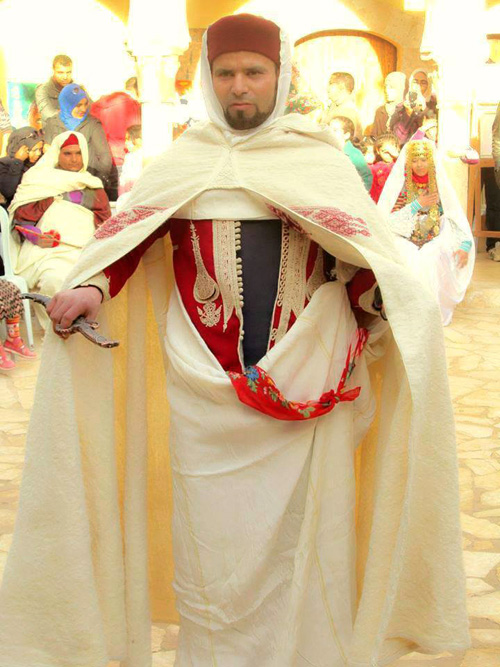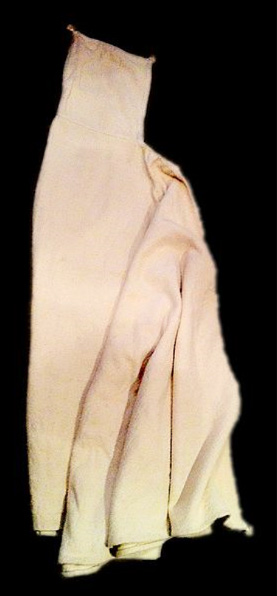 This traditional cloak originates from Berber outerwear, so it can be found not only in Algeria but also in Morocco, Palestine (although, it’s a women’s cloak in Palestine, with a hood but made in a different design), Tunisia, and other North African countries. In Algeria and Morocco, it’s a male garment and it looks charming, especially a white burnous adorned with embroidery and worn for ceremonial occasions.
This traditional cloak originates from Berber outerwear, so it can be found not only in Algeria but also in Morocco, Palestine (although, it’s a women’s cloak in Palestine, with a hood but made in a different design), Tunisia, and other North African countries. In Algeria and Morocco, it’s a male garment and it looks charming, especially a white burnous adorned with embroidery and worn for ceremonial occasions.
In general, a burnous (also spelled as bournous, burnoose, or barnous) is a long woolen cloak with a pointed hood. A simple everyday burnous can be gray or brown, but the most common colors for this garment are white, beige, or cream.
Originally, this cloak was invented by Berbers to keep people warm on cold desert nights. White burnouses were usually ceremonial garments for high-status men. Today, an Algerian man of any origin or wealth is free to wear a white burnous. But such a cloak is still more appropriate for festive or ceremonial events – weddings, religious occasions, holidays, etc.

Tunisian festive burnous embellished with beautiful embroidery
In the past, young men received their white burnous just before the wedding and wore this cloak to the pre-wedding celebration and on the wedding day. A burnous could be hand-woven by one’s mother or grandmother or passed from one generation to the next.
Handwoven burnouses are often coarse because the fabric is made from sheep fleece at home, without any complicated machinery and technologies, but more festive cloaks have higher quality, they’re made from fine thin wool and are a lot softer and comfier.
Unfortunately today, the craft of weaving a burnous at home gradually is becoming old-fashioned and forgotten. Fewer and fewer people know how to do it – industrially-made cloaks are cheaper and easier to produce. But Algerians realize how serious the situation is and they’re trying to preserve this craft. There is even a saying, “Do not give me a burnous, teach me to weave it”. So hopefully, young artisans will learn how to weave and sew a burnous and this wonderful handmade garment won’t be lost for the world.

Vintage white burnous from Tunisia. Credits to Habib M’henni / Wikimedia Commons
Algerian traditions according to wearing a burnous are really curious. For example, there are 6 ways of draping this cloak:
- a burnous is worn over both shoulders, falling down the man’s back is the most popular draping. It is used by men walking down the streets of villages and towns;
- a burnous is thrown over one shoulder when a man goes to the market. This indicates that he’s the head of the family;
- sometimes a burnous is buttoned at the neck and chest but the ends of the cloak are thrown back, out of the way. At the same time, the hood is on the head;
- if a man needs a “hideout” (from bad weather or people’s judgment), he can wrap his body in a burnous fully, putting the hood on as well;
- a burnous can be tied in a certain way so that it was out of the way and the man could do the chores and manual work. The light-colored burnous should stay away from dirt to be clean and tidy, which is not very easy when your cloak is made from such a large amount of fabric;
- the last way of wearing a burnous is interesting because the hood is put aside from the head and used as a pocket to carry goods. Men often did this when coming back from the market with purchases.
There are also other ways of draping a burnous but the mentioned ones were originally and still are among the most common. And how charming this cloak is – there are so many variants of wearing it!


